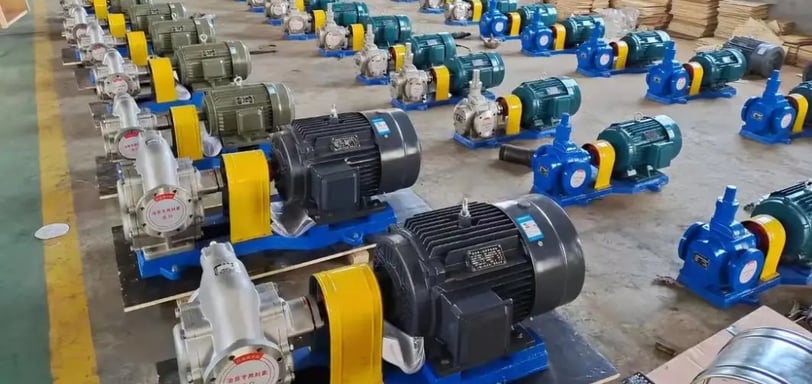Comparison of Gear Pumps, Vane Pumps, and Piston Pumps: Advantages, Disadvantages, and Applications
10/23/20242 min read


Introduction to Pump Types
Pumps are essential components in various industries, serving the critical function of moving fluids. Among the different types of pumps, gear pumps, vane pumps, and piston pumps are widely used. Each type has unique characteristics, advantages, and disadvantages that make them suitable for specific applications. In this blog post, we will explore these three pump types by comparing their benefits and limitations, as well as their respective scope of application.
Gear Pumps: Advantages and Disadvantages
Gear pumps are positive displacement pumps that utilize the meshing of gears to pump fluid. One of their primary advantages is their ability to handle high-viscosity fluids with ease. They are also known for their simple design, which results in low maintenance requirements. Gear pumps provide a steady flow rate and can operate at high pressures, making them highly efficient for many industrial applications.
However, gear pumps do have some disadvantages. They might not be suitable for pumping abrasive or corrosive fluids, as the wear on the gears can lead to early failures. Additionally, gear pumps are sensitive to changes in viscosity; if the fluid becomes too thin, it can lead to a drop in performance.
Vane Pumps: Key Features
Vane pumps use rotating vanes within a chamber to create a vacuum that draws in and expels fluid. One significant advantage of vane pumps is their versatility; they can handle a wide range of fluid viscosities and types. Vane pumps are also known for their quiet operation, which is beneficial in applications where noise reduction is important.
On the downside, vane pumps typically have lower efficiency compared to gear pumps and may require more frequent maintenance to keep the vanes functioning correctly. They can experience wear over time, particularly in high-pressure applications. Vane pumps may also not be the best choice for fluids that contain solids, as this can lead to blockages.
Piston Pumps and Their Scope of Application
Piston pumps operate by using a piston to create suction and discharge of fluids. This mechanism allows for high-pressure capabilities and precisely controlled flow rates, making piston pumps an excellent choice for applications that require precise dosing. Their high efficiency is another advantage, as they can operate effectively across a range of pressures.
However, piston pumps are generally more complex than the other types mentioned, which can lead to higher initial costs and maintenance needs. They may not be as effective when pumping viscous fluids, and the pulsating flow produced by piston pumps may require additional equipment to smooth out the output.
Conclusion: Choosing the Right Pump
In summary, gear pumps, vane pumps, and piston pumps each have their own distinct advantages and disadvantages. The choice of pump depends on the specific application requirements, including fluid type, viscosity, pressure, and maintenance considerations. Understanding the scope of application and limitations of each pump type is crucial in selecting the most appropriate solution for your fluid handling needs.
